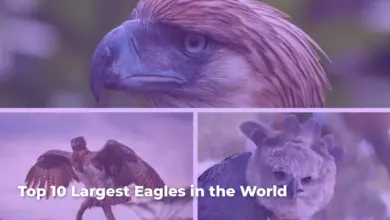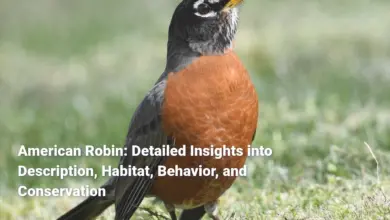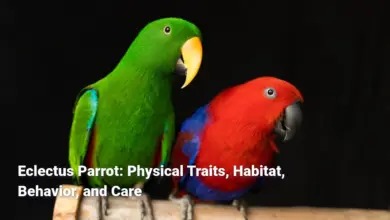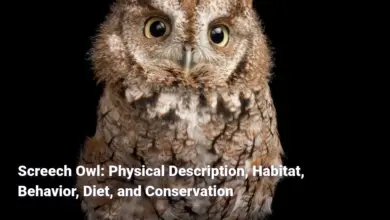Swift Bird: Comprehensive Guide to Characteristics, Habitat, Feeding, Breeding, and Conservation
An In-Depth Look at the Swift Bird: From Its Unique Characteristics and Habitat to Feeding, Migration, and Conservation Challenges
Swifts, remarkable members of the Apodidae family, embody the essence of flight with their unparalleled aerial prowess and unique adaptations. These small to medium-sized birds have captivated ornithologists and nature lovers alike, primarily due to their striking physical features, remarkable behaviors, and intricate social structures. Adapting exquisitely to various environments, swifts stand as a testament to nature’s ingenuity and resilience. From the bustling cities they weave through to the serene landscapes they inhabit, swifts, often overlooked, play a crucial role in their ecosystems, contributing to natural pest control and the delicate balance of food webs.
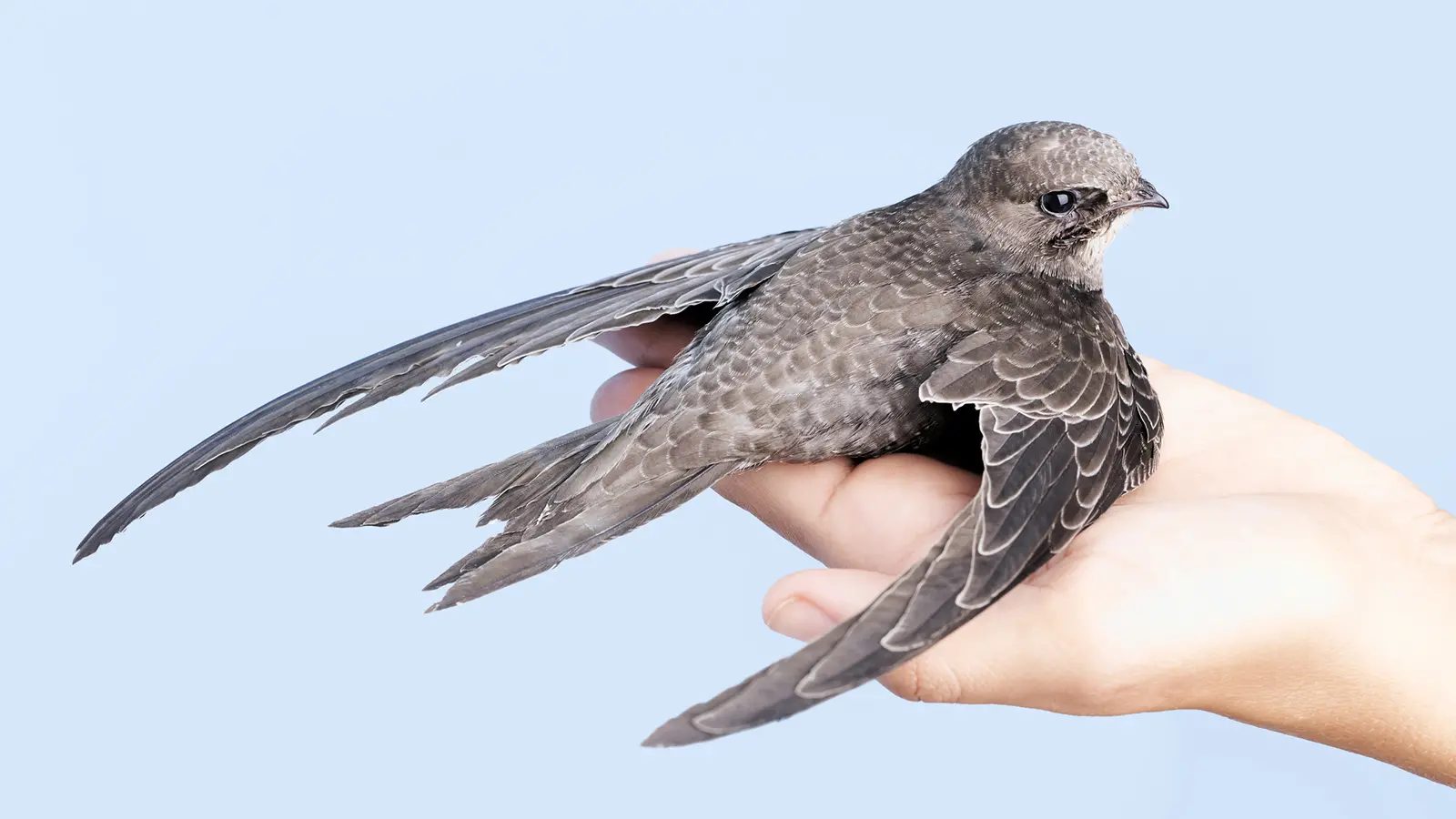
In this comprehensive exploration, we will delve into the intricate characteristics of swift birds, focusing on their physical features, behavioral patterns, preferred habitats, diet, reproduction, migration, and the pressing conservation challenges they face today. Each aspect sheds light on the lives of these aerial masters, offering insights into their significance in our world and the need for concerted conservation efforts to protect them. Join us as we embark on a journey into the world of swifts and uncover the unique traits that distinguish these extraordinary birds.
Characteristics of Swift Birds
Swift birds exhibit numerous defining characteristics that not only separate them from other avian species but also accentuate their adaptation to life in the air. They are akin to the bold athletes of the bird world, their sleek bodies designed for speed and agility. Much like torpedoes slicing through water, swifts maneuver effortlessly through the air, exhibiting grace and precision. Their size, generally ranging from about 9 to 23 centimeters, places them among small yet mighty avian species.
Their long, scythe-like wings can measure nearly twice the length of their bodies, visually representing their commitment to flight. These wings are not just for aesthetics; they are engineered for endurance, allowing swifts to conduct incredibly long flights without needing to rest. Additionally, swifts possess small, weak legs, ill-suited for perching; instead, they rely on their excellent aerial skills to cling to vertical structures for breeding purposes.
Consider their coloration: primarily sooty brown or black, reminiscent of the night sky, these shades enable swifts to camouflage seamlessly against their habitat. In flight, they become ethereal, merging with the clouds. This coloration is not merely decorative; it serves a crucial purpose in protecting them from predators while hunting in the open air.
- Body Structure: Sleek and streamlined fashion reduces air resistance.
- Wings: Long and scythe-like, offering extraordinary agility and speed.
- Feet: Small and weak, optimized for clinging, not perching.
- Coloration: Dark plumage serving as effective camouflage during flight.
Ultimately, the unique characteristics of swift birds display a perfect blend of form and function, emphasizing their specialized lifestyle as agile aerial hunters perfectly adapted to a life spent high above the ground.
Physical Features of Swift Birds
Swifts possess a beautifully streamlined body structure designed explicitly for life in the air. With sleek, aerodynamic forms, these birds epitomize the principle of form following function, enabling them to glide and maneuver with negligible air resistance. Their physical attributes facilitate behaviors that are nothing short of extraordinary.
The wings of swifts are particularly noteworthy. They are long and pointed, reminiscent of sword blades slicing through the sky. This design grants them exceptional speed, allowing swifts to reach speeds of approximately 70 miles per hour when in full flight. Their tails, typically forked or slightly notched, assist remarkably in their agility, acting like rudders that guide their aerial navigation.
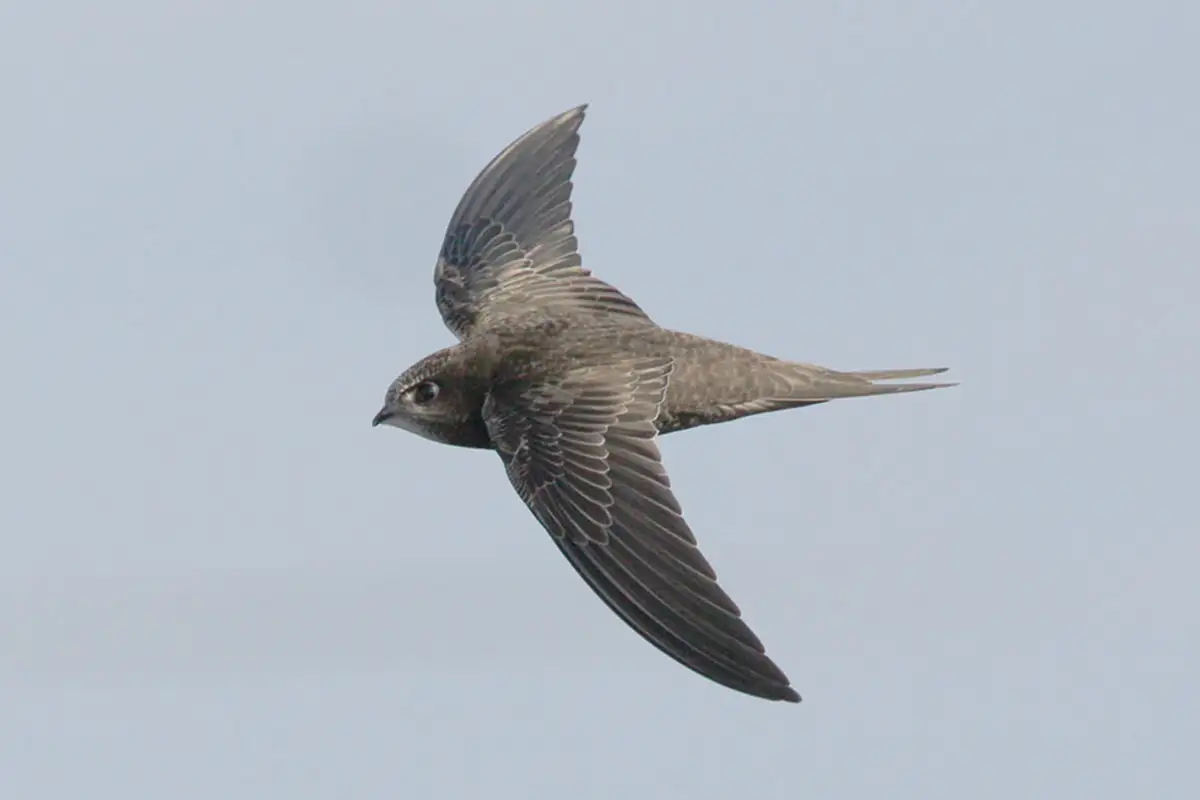
Swifts’ coloration adds another layer of intrigue to their physical features. Most species exhibit a uniform sooty brown or black plumage, effectively camouflaging them against the sky and deterring potential predators, much like a shadow flitting over the landscape. Some species have stark white or pale markings that serve to attract mates during the breeding season.
- Size and Shape:
- Length: Ranges between 9 to 23 centimeters (3.5 to 9 inches).
- Wingspan: Can reach up to 40 centimeters (16 inches) in some species.
- Adaptation for Clinging:
- Swifts have evolved relatively short legs and small feet, which are not suited for walking. Instead, they use these appendages primarily to grip vertical surfaces such as cliffs or buildings, demonstrating their unique adaptability.
- Feeding Mechanism:
- The broad mouth of swifts is a marvel in itself, designed to capture insects mid-flight. This adaptation allows swifts to have a continuous supply of food while soaring, embodying the true essence of their aerial lifestyle.
- Tail Structure:
- The slightly forked tail provides the necessary stability and control when swifts dive or make sharp turns in pursuit of prey.
The physical features of swift birds paint a stunning portrait of evolutionary adaptation to an aerial environment, showcasing how their bodies have become finely tuned instruments of flight. These adaptations not only enable their extraordinary flight capabilities but also play a crucial role in their survival, highlighting the intricate relationship between morphology and behavior in the natural world.
Behavioral Patterns of Swift Birds
The behavioral patterns of swift birds provide a fascinating glimpse into their way of life and their adaptations to an aerial lifestyle. Emblematic of agility and social interaction, swifts engage in a variety of behaviors that showcase their remarkable capabilities. Much like highly skilled dancers, swifts display an array of aerial maneuvers that include agile soaring, diving, and even acrobatic courting displays, emphasizing their mastery of the skies.
One of the most striking behavioral traits of swifts is their social structure. They are highly gregarious birds, often seen flying in flocks during their feeding sessions. This communal behavior enhances their foraging success, as they can cover larger areas while hunting for insects. Rather like a synchronized team of aerialists, swifts work together to maximize their hunting efficiency. Their vocalizations, characterized by high-pitched screams and chattering, facilitate communication within these flocks, acting as both social bonding and warning signals.
During the breeding season, swifts become even more socially interactive. They commonly nest in large colonies, sometimes consisting of hundreds or even thousands of individuals. This communal nesting behavior helps enhance protection against predators and maximizes care for the young, as multiple pairs can assist in keeping an eye on the chicks.

Feeding habits can also be linked to their aerial lifestyle. Swifts have a unique method of feeding while also employing a behavior known as “insect hawking,” which allows them to capture flying insects on the wing. The birds can consume up to 10,000 insects in a single day during peak feeding times, making them critical insectivores in their ecosystems.
- Flight and Feeding: Swifts eat, drink, and even mate while in flight.
- Communal Lifestyle: They often roost and migrate in large groups, enhancing social dynamics.
- Social Communication: High-pitched screams facilitate interactions and warnings among flocks.
- Nesting Behavior: They prefer nesting in high locations, providing safety and easier access to hunting grounds.
Swifts’ behavioral patterns not only illustrate their exceptional adaptations to an aerial life but also deepen our understanding of their role in maintaining ecological balance. By effectively managing insect populations and contributing to the social structure of their habitats, swifts play a crucial role in the ecosystems they inhabit.
Habitat of Swift Birds
Swift birds, with their unique adaptations for aerial life, inhabit diverse environments worldwide except for polar regions and a few isolated islands. Akin to the tiniest nomads of the skies, swifts prefer open habitats where they can utilize their exceptional flight capabilities and access abundant food supplies.
In urban landscapes, swifts have demonstrated remarkable adaptability, often nesting in crevices of buildings, church steeples, and under eaves. This intertwining with human architecture serves to illustrate a beautiful coexistence between nature and urbanity. They transform the drab concrete jungles into lively ecosystems buzzing with life, much like musicians bringing rhythm to an otherwise silent venue.
Natural habitats for swifts include an array of settings, from open fields and meadows to forests and woodlands. In these habitats, swifts take advantage of abundant flying insect populations. Their preference for high-altitude nesting sites offers protection from ground-level predators, mirroring the strategies employed by other bird species to safeguard their young.
- Habitat Types:
- Urban Environments: Swifts thrive in cities, nesting in high structures and foraging in urban greenspaces.
- Open Fields: These areas provide ample foraging opportunities as they attract a vast array of airborne insects.
- Forests and Woodlands: Swifts can often be seen flying above wooded areas, hunting for insects that thrive in these environments.
- Nesting Preferences:
- Swifts typically prefer vertical nesting sites to deter predators, using old buildings, cliffs, or tree hollows. Their choice of nesting locations showcases their dependence on both natural structures and human-made environments for survival.
- Food Availability:
- The strategic selection of habitats is closely tied to the availability of food sources. Swifts are often seen foraging over meadows or above water bodies, where insects are plentiful, highlighting their behavioral adaptation to target high-density insect populations.
The habitats associated with swift birds vividly illustrate their adaptability and the intricate relationship between behavior, environment, and survival. Their ability to thrive in urban settings, alongside their natural habitats, underscores their resilience as a species. As urban areas continue to expand, understanding where swifts nest and forage will be crucial for ensuring their populations remain stable.
Preferred Environments for Swift Birds
Swifts excel in a myriad of environments due to their exceptional adaptability, showcasing a remarkable ability to thrive in both urban and natural habitats. They demonstrate great versatility, often switching between these settings based on food availability and nesting opportunities.
In urban surroundings, swifts have found creative nesting spots in tall buildings, bridges, and church steeples. The voids and crevices among urban architecture create ideal nesting sites for these swift aerial hunters. The bustling life of cities becomes an integral part of their life cycle as they soar above streets and parks, hunting for insects often found in abundance due to human activities.
Conversely, swifts also flourish in more natural environments. Cultivated fields, meadows, and grasslands host rich insect activity, making them prime hunting grounds. In these areas, swifts can take advantage of open skies and raised vantage points, capitalizing on their exceptional flying abilities to capture prey mid-flight. Coastal cliffs and dunes, less frequented by human activity, serve as perfect breeding grounds, offering safety from terrestrial predators while they raise their young.
- Urban Environments:
- Nesting Sites: High-rise buildings, bridges, and eaves make excellent nesting locations.
- Foraging Opportunities: Abundant airborne insects in parks and gardens contribute to their diets.
- Natural Environments:
- Woodlands and Grasslands: Open areas for hunting with ample insect populations.
- Coastal Cliffs: Suitable breeding grounds with reduced predator access.
- Adaptation:
- Swifts’ flexibility in selecting habitats emphasizes their resilience, enabling them to thrive in diverse geographic areas.
Swifts’ preferred environments highlight not only their ecological adaptability but also their integral role in maintaining the balance of insect populations. Understanding these environments illuminates the necessity for conservation efforts that protect both urban and natural habitats, ensuring these magnificent aerial birds continue to grace our skies.
Geographic Distribution of Swift Birds
Swift birds, displaying remarkable geographical diversity, inhabit a wide range of ecosystems across the globe. Their distribution encompasses various continents, highlighting their adaptability to different habitats and ecological niches. Much like skilled travelers, swifts roam vast distances, migrating between breeding and wintering grounds that can span thousands of kilometers.
In Europe, swifts are commonly seen during the summer months, with the Common Swift (Apus apus) recognized as one of the most widespread species. These birds breed in urban settings, rural landscapes, and natural habitats across the continent, contributing to their high populations. As summer wanes and temperatures drop, these swifts embark on an extraordinary migratory journey to wintering grounds in sub-Saharan Africa, traveling thousands of kilometers in pursuit of warmer climates and food sources.
Similarly, swifts are distributed in parts of North and South America, where species like the Chimney Swift (Chaetura pelagica) thrive. As cities in the Americas develop, these birds adapt to urban environments, selecting chimneys and other structures as nesting sites. The presence of flying insects in city parks and gardens further supports these urban-dwelling populations, illustrating swifts’ remarkable ability to exploit both natural and man-made habitats.
- Distribution Areas:
- Europe: Common in yards, rooftops, and open skies in summer.
- North America: Found in urban settings like cities and towns, often nesting in chimneys.
- South America: Certain species are acclimated to specific environments.
- Migration Patterns:
- Swifts commonly migrate from breeding grounds in Europe to wintering areas in Africa, covering approximately 22,000 kilometers annually. This extensive migration speaks to their need for optimal environments throughout different seasons.
- Absence in Specific Regions:
- The swift species are almost entirely absent from polar regions, remote islands, and areas of extreme climate, demonstrating their preference for habitats that support insect populations.
The geographic distribution of swift birds underscores their adaptability and ability to exploit various habitats effectively. Their migratory behaviors further emphasize their resilience, linking different ecosystems and showcasing their role in the natural world. As we explore these patterns, it becomes crucial to recognize their dependence on a variety of environments to thrive and the significance of safeguarding these habitats against ongoing challenges.
Feeding Habits of Swift Birds
Swifts are celebrated for their unique feeding habits, which revolve around their aerial lifestyle and dietary needs. As insectivores, these birds primarily consume flying insects, capturing prey mid-air while demonstrating exceptional agility and speed. Their feeding behavior is not only fascinating but essential, playing a vital role in controlling insect populations in their environments.
Unlike many other birds that forage on the ground or in vegetation, swifts predominantly hunt while in flight. This behavior allows them to cover vast areas in search of food, taking advantage of their unique adaptations for aerial hunting. Their broad mouths and specialized feeding techniques enable them to catch and consume a variety of insects, making them crucial allies in maintaining ecological balance.

Swifts showcase remarkable feeding efficiency, catching between 10,000 to 20,000 insects daily during peak breeding seasons to meet the dietary demands of their nestlings. This voracious appetite ensures abundant food resources are available, contributing to the swift’s role as a natural pest controller. Their ability to drink water while flying skimming over water surfaces with their beaks adds another layer of adaptation, further facilitating their unique feeding habits.
- Diet Composition:
- Primarily insectivorous, feeding on flying insects like mosquitoes, moths, and flies.
- Soft-bodied insects, which are easier to catch, make up a bulk of their diet.
- Feeding Techniques:
- Catching prey mid-flight using swift maneuvers.
- Foraging in flocks to enhance hunting efficiency and share information about abundant food sources.
- Hydration Method:
- Swifts hydrate by skimming water surfaces, showcasing their remarkable adaptation to a life spent almost entirely on the wing.
The feeding habits of swift birds highlight their unique adaptations to an aerial lifestyle and showcase their ecological significance as effective insectivores. By thriving in various habitats and effectively controlling insect populations, swifts embody the intricate interconnectedness of ecosystem dynamics.
Diet Composition of Swift Birds
The diet of swift birds primarily consists of aerial insects, providing crucial insights into their ecological role and dietary adaptations. As proficient insectivores, these birds have evolved exquisite mechanisms for locating and capturing prey, essential for their survival and reproduction.
Swifts typically pursue a diverse range of insects while flying, focusing on softer-bodied flying insects that are easier to catch. The most common insects in their diet include:
- Mosquitoes: Abundant during certain seasons, forming a significant portion of their intake.
- Flies: Several fly species are easily captured while in flight.
- Moths: Particularly during the evening, these insects serve as a crucial food source.
- Beetles: Though tougher, swifts can consume smaller varieties while on the move.
- Ants and Wasps: A source of protein, especially in migratory regions.
Feeding typically occurs at higher altitudes (ranging from 50 to 100 meters) where swifts take advantage of abundant flying insects. Utilizing their agile flight patterns, they can intercept and capture their prey mid-air with remarkable accuracy, highlighting their unique adaptations for aerial hunting.
- Feeding Behavior:
- Swifts forage in flocks, a behavior that not only increases hunting efficiency but also enhances social interactions within groups.
- Daily Consumption:
- During peak breeding seasons, an adult swift can consume up to 3,000 to 5,000 insects daily to meet energy requirements.
- Foraging Altitude:
- Swifts typically forage at altitudes ranging from 50 to 100 meters (165 to 330 feet), which allows them to exploit rich insect populations during advantageous weather conditions.
Understanding the diet composition of swift birds elucidates their role as natural pest controllers, highlighting the significance of their feeding habits in maintaining ecological balance. Their impressive diets showcase adaptability, ensuring they effectively thrive in diverse environments.
Foraging Techniques of Swift Birds
Swifts exhibit fascinating and specialized foraging techniques that underscore their adaptations to a life spent almost entirely in the air. Unlike many terrestrial birds that rely on grounded foraging methods, swifts are quintessential aerial hunters think of them as the acrobats of the avian world, gracefully maneuvering through the skies in search of food.
In pursuit of their preferred prey flying insects swifts employ various strategic methods. These birds can often be observed flying in large groups, capitalizing on social dynamics to enhance their hunting success. As they glide gracefully through the air, they deftly navigate through swarms of insects, displaying remarkable agility that allows for rapid changes in direction and speed.
- Group Foraging:
- Swifts often forage in flocks, working together to identify and capture insects. This behavior can drastically increase efficiency, much like a coordinated team in sports.
- Hawking Technique:
- As they engage in a technique known as “hawking,” swifts fly directly into swarms of insects at impressive speeds. Their aerodynamic bodies and sharp reflexes allow them to snatch insects in mid-air without losing momentum.
- Continuous Flight:
- Swifts rarely land while foraging; they often catch food while in sustained motion. With small legs not designed for walking, this technique is essential for their survival, facilitating seamless feeding without interrupting their flight.
- Adaptability:
- Depending on weather conditions and the time of day, swifts adjust their foraging altitudes to optimize insect availability. For example, they may soar higher during the day when thermals are warm, allowing for greater hunting efficiency.
The foraging techniques of swift birds reveal the impressive adaptability and specialized lifestyle developed over generations. Their ability to capture prey mid-flight not only demonstrates their evolutionary success as aerial hunters but also highlights the essential role they play in controlling insect populations, ultimately benefiting their ecosystems.
Reproduction of Swift Birds
Reproduction among swift birds is a fascinating process characterized by unique nesting habits and elaborate mating rituals that highlight their social structures and life history. Much like an aerial ballet, swifts indulge in practices designed to strengthen pair bonds and ensure the successful raising of their young.
Swifts are primarily monogamous, often forming long-lasting partnerships that span multiple breeding seasons. Their mating rituals are characterized by elaborate aerial displays where male swifts perform acrobatic feats in flight, showcasing their vigor and suitability as mates. These displays not only attract females but also serve to reinforce the bond between partners.
Nesting typically occurs in spring, as swifts seek high-altitude locations that offer protection from ground-based predators. They utilize saliva to adhere nesting materials together, showing remarkable adaptability in shaping and securing nests that can endure challenging weather conditions. The nesting cycle includes:
- Nesting Locations:
- Commonly found in eaves of buildings, cliff crevices, and other high, sheltered spaces that provide safety for their young.
- Clutch Size:
- Swifts usually lay between one to four eggs, depending on the species. Parental care involves both members of the pair incubating the eggs.
- Incubation Period:
- The duration of incubation ranges from approximately 19 to 20 days. Both parents remain actively engaged in nurturing the young once hatched.
- Chick Development:
- The chicks are altricial at birth, requiring continuous feeding and care by both parents. They fledge at around 30 days of age but remain dependent on their parents for food.
This reproductive strategy highlights the importance of communal nesting sites, where swifts take advantage of social dynamics to safeguard their offspring against predators.
The array of adaptations and behaviors during reproduction illustrates the interplay of evolutionary pressures and ecological needs, making swift birds a captivating subject for study within ornithology.
Mating Rituals of Swift Birds
Swifts engage in captivating mating rituals that emphasize their social structures and the aerial prowess that defines their species. These birds embody a delicate ballet of flight and sound during the breeding season, capturing the attention of observers with their dynamic and intricate displays.
Mating among swifts, particularly the Common Swift (Apus apus), typically occurs from March to June. The males initiate courtship rituals that involve elaborate aerial acrobatics designed to impress potential partners. These displays may include rapid dives, soaring flights, and synchronized movements with females, showcasing strength, agility, and fitness attributes that are critical in attracting mates.
- Aerial Displays: Male swifts often perform a series of impressive flight maneuvers that include steep dives and high-speed swoops, a demonstration of their physical capabilities that females assess during courtship.
- Vocalization: The high-pitched calls swifts emit during courtship communicate enthusiasm and readiness, serving as a call to potential mates while reinforcing pair bonds.
Once a pair has formed, they may remain together for several breeding seasons, often returning to the same nesting sites each year. This long-term partnership not only enhances reproductive success but also allows both parents to share responsibilities in raising their young.
- Nesting Structures: Through unique adaptations, swifts construct nests using their saliva to bond materials together, which provides a strong and secure structure for eggs and chicks.
- Courtship Duration: The courtship behaviors can span several weeks, ensuring that both partners establish a strong bond before the nesting period.
Swifts’ mating rituals vividly illustrate their dedication to ensuring reproductive success through dramatic displays and communicative behaviors. By leveraging their flight abilities, these aerial performers enchant observers and contribute significantly to their species’ survival.
Nesting Habits of Swift Birds
The nesting habits of swift birds are as dynamic and unique as their aerial lives. These birds exhibit fascinating adaptations in their choice of nesting sites, construction methods, and care for their young elements that contribute to their success as a species.
Swifts typically seek high, sheltered locations for nesting. Commonly observed nesting in the eaves of buildings, cliff crevices, and other high vantage points, these locations provide safety from terrestrial predators and environmental threats. The choice of nesting site reflects the swifts’ preference for habitats that offer protection and accessibility to ample insect prey for feeding.
Swifts cleverly construct their nests using materials gathered during their foraging flights, blending various items such as feathers, grass, and plant fibers. A notable feature of swift nests is the use of saliva to bond materials together, empowering them to form strong and secure structures. This method exemplifies their adaptability; the nests can withstand diverse weather conditions, ensuring the safety of the young.
- Nest Construction:
- Nests are crafted using collected materials and saliva, forming a secure structure.
- Location selection is vital, as swifts prefer high, sheltered spaces that reduce exposure to danger.
- Parental Care:
- Both parent swifts share incubation duties, fostering a cooperative breeding strategy.
- After hatching, parents feed their chicks through regurgitation, conveying vital nutrition required for rapid growth.
- Colonial Nesting:
- Swifts often nest in colonies, which enhances their protection against predators. This communal approach allows for shared vigilance and increased survival rates for offspring.
The nesting habits of swift birds underscore their evolutionary adaptations to an aerial life while establishing social structures that facilitate successful reproduction. By choosing safe nesting locations and working collaboratively, swifts emphasize their role in ecological balance and the vital need for conservation efforts that protect their habitats.
Migration Patterns of Swift Birds
Migration patterns among swift birds, particularly species like the Common Swift (Apus apus), display extraordinary nuances that reflect their evolutionary adaptations and life strategies. These migratory birds undertake remarkable journeys often covering thousands of kilometers across continents, driven by instinct and environmental cues.
Timing and Routes: Swifts usually return to their breeding grounds in Europe around early May, coinciding with the warmer temperatures that signal the arrival of summer. Once breeding has concluded, they commence their migration back to wintering grounds in sub-Saharan Africa, typically beginning their departure in late summer or early autumn. The latest swifts, particularly those breeding in northern regions, may not leave until mid-August.
- Long-Distance Migration:
- The average migration distance for swifts can reach approximately 22,000 kilometers annually, making them among the longest-range migratory birds in their family.
- Behavior during Migration:
- Swifts migrate almost continuously in flight, taking advantage of thermal updrafts that help reduce the energy expenditure during long journeys. Their ability to feed in flight further enhances their survival rate without disruptions.
- Navigational Techniques:
- Swifts exhibit remarkable navigational skills, utilizing environmental cues like the sun, celestial positioning, and possibly even earth’s magnetic field. This complex navigation allows them to traverse unfamiliar territories with confidence.
By understanding the intricate migration patterns of swift birds, one can appreciate not only their adaptability and resilience but also their role within ecosystems across vast geographic spaces. Their migratory journeys exemplify the interconnection between species and the importance of conserving migratory pathways and habitats.
Seasonal Migration Routes of Swift Birds
The seasonal migration routes of swift birds, particularly the Common Swift (Apus apus), paint a vivid picture of their remarkable adaptability and resilience. These birds undertake substantial migrations each year, linking diverse ecosystems and demonstrating both their instinctive behaviors and survival strategies.
Breeding Range: Swifts primarily breed in temperate regions of Europe and parts of Asia. Their nesting sites often include urban areas, where they take advantage of buildings and structures for roosting and breeding. As spring arrives, these birds return to their breeding territories, heralding the seasonal change and encouraging a vibrant ecosystem filled with life.
Wintering Grounds: After completing their breeding cycle, swifts migrate southward to their wintering grounds in sub-Saharan Africa, increasing their chances of finding abundant food resources during the colder months. En route, they navigate vast landscapes, including mountain ranges and deserts, showcasing their extraordinary endurance.
- Routes and Distances:
- Migrating swifts can cover distances of up to 800 kilometers in a single day while traveling between breeding and wintering grounds.
- Stopover Sites:
- While many swifts migrate continuously, certain individuals may take short breaks along their routes to rest and feed if favorable conditions arise.
- Temperature and Climate Variability:
- Swifts often adjust their migration timing based on climate fluctuations, ensuring they align their journeys with optimal conditions for breeding and feeding.
Understanding the seasonal migration routes of swift birds is integral to appreciating their role in ecosystem dynamics. The vast distances they cover link various habitats across continents, emphasizing the need for protective measures that safeguard their migratory pathways and breeding sites.
Factors Influencing Migration of Swift Birds
Numerous factors influence the migration patterns of swift birds, including ecological, behavioral, and environmental elements that govern their seasonal journeys. These migratory habits reflect their evolutionary adaptations and survival strategies, incorporating both instinctual behaviors and responses to changing conditions.
Food Availability: The presence of abundant insect populations significantly impacts swift migration. As insectivores, swifts seek out regions with high concentrations of flying insects, often adjusted their migration routes based on localized food fluctuations. The timing of their migration is intricately linked to the blooming periods of plants that provide habitats for their prey.
Climate and Weather Conditions: Climatic conditions such as temperature and wind patterns heavily influence swift migration. Favorable weather can facilitate migration, whereas storms or adverse conditions can delay their journeys. Swifts are typically sensitive to weather patterns that can affect their energy expenditure during long-distance travel.
- Breeding Cycles: The need to return to specific breeding areas drives their migratory behavior. Swifts aim to return to their nesting sites as soon as conditions are suitable, often dictated by seasonal changes in climate.
- Social Dynamics: Swifts often migrate in groups, which can influence individual migratory decisions. Group dynamics can provide safety in numbers and enhance foraging abilities, making social behaviors integral to their migration strategy.
- Geographical Barriers: Natural barriers, such as mountain ranges or large bodies of water, can affect migration routes and necessitate detours in their travels. These geographical features are important considerations that swifts navigate during their journeys.
Understanding the various factors influencing the migration of swift birds sheds light on their dependency on ecological conditions and the tangible impacts of climate change on migratory pathways. Protecting these critical habitats and routes is essential for the continued survival of swift species and their role in maintaining ecological balance.
Conservation Status of Swift Birds
The conservation status of swift birds has become a significant concern among ornithologists and conservationists due to alarming declines in many swift populations. Numerous species within the Apodidae family are experiencing pressures from environmental changes, habitat loss, and declining insect populations that pose challenges to their survival.
Studies indicate that many swift species, such as the Common Swift (Apus apus), have seen significant reductions in their numbers, with some estimates suggesting a decline of up to 30% in certain regions over recent decades. These trends raise red flags regarding the overall health of swift populations and the importance of safeguarding their habitats.
- Population Trends:
- Many swift species are experiencing declines related to habitat loss and reductions in available food sources, making it essential to monitor their populations regularly.
- Legislative Protections:
- Several swift species benefit from protective legislation, including those outlined in international conservation treaties that aim to combat habitat loss and safeguard breeding grounds.
- Public Awareness:
- Increased public awareness campaigns focused on swift conservation are essential for supporting urban habitats and encouraging initiatives such as the installation of nesting boxes in residential areas.
By acknowledging the challenges faced by swift birds and understanding their conservation status, effective measures can be implemented to preserve their populations and habitats. Continued research, monitoring, and public engagement are crucial in ensuring the protection of these unique avian species.
Threats to Swift Bird Populations
Swift birds face numerous threats that contribute to the decline in their populations, highlighting the urgent need for protective measures and conservation efforts. These challenges arise primarily from human activities, climate change, and shifting ecological conditions.
- Habitat Loss: Urbanization and modern construction often lead to the destruction of nesting sites that swifts depend upon. The demolition of old buildings or the removal of natural structures like cliffs can severely impact swift populations, reducing available habitats to raise their young.
- Climatic Changes: Extreme weather events and climate variability can disrupt the timing of their migratory patterns and breeding cycles. Increased frequency of storms and changes in temperature can affect resource availability, making it more challenging for these birds to find adequate food during critical feeding periods.
- Pesticide Use: The widespread application of pesticides in agricultural practices has been linked to declines in flying insect populations swift birds’ primary food source. This reduction not only affects adults but also impacts the survival rates of nestlings, who rely on abundant prey for growth and development.
- Increased Mortality: Urban environments introduce dangers such as collisions with glass structures, vehicles, and predation by cats, leading to increased mortality rates among swift populations. The height and speed at which they fly can lead to significant risks in modern environments.
The multitude of threats faced by swift birds necessitates immediate action to address and mitigate these challenges. Conservation strategies must prioritize habitat preservation, create public awareness, and push for changes in agricultural practices to ensure the long-term survival of these remarkable aerial species.
Conservation Efforts for Swift Birds
Efforts to conserve swift birds are essential in combating the decline of their populations and protecting their habitats. Recognizing the challenges these birds face, various organizations and initiatives focus on preservation and restoration to ensure a sustainable future for swift species.
- Habitat Restoration: Many conservation programs prioritize the restoration of urban habitats where swifts prefer to nest. This includes advocating for the installation of nesting boxes and the preservation of old buildings that provide crevices and eaves for breeding.
- Legislative Protections: Protective legislation, such as those outlined in the Migratory Bird Treaty Act, serves to safeguard swift habitats from destruction and development. Laws aimed at conservation must be enforced and adapted to address the current threats faced by swift populations.
- Public Engagement: Raising awareness among communities and engaging the public in swift conservation efforts are vital. Initiatives can include educational campaigns that encourage residents to support swifts by maintaining favorable nesting conditions in their homes and local areas.
- Research and Monitoring: Continuous research to monitor swift populations and assess the effectiveness of conservation strategies is crucial. Collaborative data collection and citizen science programs can empower communities to participate in tracking swift populations and habitats.
Through collaborative efforts and multifaceted strategies aimed at habitat restoration, legislative protections, public engagement, and increased monitoring, the conservation of swift birds becomes a feasible and necessary goal. Understanding the intricacies of their lives helps shape policies and public awareness that foster the protection of these mesmerizing aerial travelers.
As swifts soar through the skies, their existence embodies the delicate balance of our ecosystems. It is imperative to ensure that these exquisite aerial performances continue long into the future, underscoring the need for dedicated conservation efforts.





